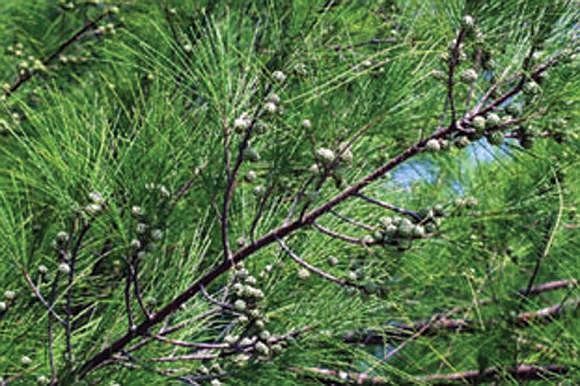- April 18, 2024
-
-
Loading

Loading

You see them in your backyards, by beaches and in parks.
Don't let their lush green leaves or blossoming flowers fool you — invasive species are harmful to the environment. Technically speaking, invasive species are exotic plant species that have become naturalized and encroach into native flora habitats, causing disruptions to naturally occuring plant species.
Let's call them the bullies of the plant world.
Luckily, local municipalities have undertaken initiatives to curb the creep of exotic plants, such as the city of Sarasota and Sarasota Bay Estuary Program's Air Potato Round-up happening Saturday, Oct. 19, and the ongoing efforts of Sarasota County Parks and Recreation to remove Brazilian pepper and Australian pines from parklands.
Sarasota County Natural Resources Director Amy Meese and city of Sarasota Environmental Specialist Alison Albee assisted in compiling this list of five common invasive species in Sarasota:
+ Australian pines
Introduced in the 1800s, these trees are commonly found near beach dunes and shorelines, and are commonly used as landscape buffers. The problem is that although they provide shade in Ted Sperling Park, they crowd out native plants and emit compounds that prevent new native plants from growing.
+ Brazilian pepper
As exotic as the name sounds, this plant is similar to holly, and forms dense thickets that displace native plantlife. These plants can be found threatening the mangrove population near Turtle Beach Park.
+ Melaleuca
These invasive plants were introduced as soil stabilizers by developers, but now threaten thousands of acres of the Everglades. Until the 1970s, these trees were considered excellent for landscaping, but threaten native plant and avian life.
+ Air potato
Though the name sounds harmless, these Asian plants disrupt natural processes and harm native plantlife. The air potato has been listed as Florida's most invasive species since 1993, according to the University of Florida Center for Aquatic and Invasive Plants.
Cocongrass was originally introduced from the Phillipines into Mississippi in the early 1900s. It was also brought into Florida soil stabilization purposes, but experts soon realized the plant had no economic benefit and was considered a pest.